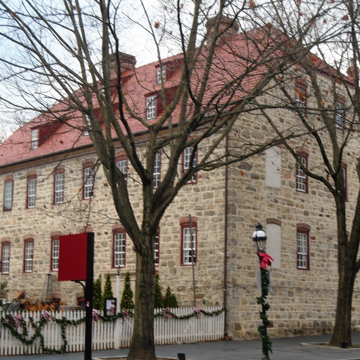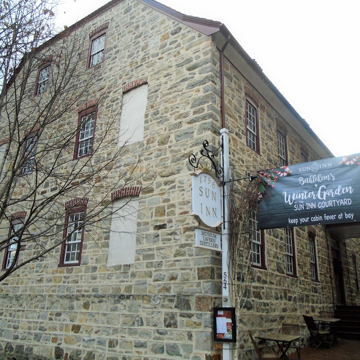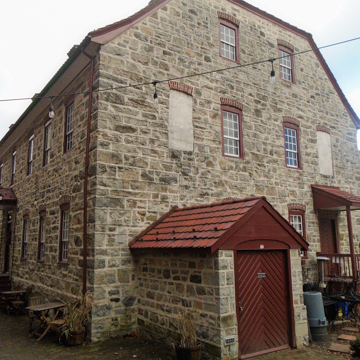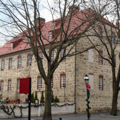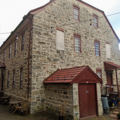As in other religious communities, the nonbelieving public was housed outside of the boundaries of the religious community. The Sun Inn rivaled the Central Moravian Church ( NO22.6) as the town's most imposing structure. One of colonial America's most celebrated hotels, both for its cuisine and cleanliness, the Sun Inn served such notables as George and Martha Washington, Benjamin Franklin, John Hancock, and the Marquis de Lafayette. A massive 66 × 40–foot four-story stone structure, it rests on four-foot-thick foundation walls set perpendicular to the street. In characteristic German fashion, the gable roof is gently canted at the eaves and jerkinheaded at either end, with a row of shed dormers on the entrance-side slope. In 1816 came the first of many alterations that resulted for more than a century in a five-story Italianate structure that totally subsumed the original building. Although some of its original fabric survives, most of the visible building is a facsimile created in 1983 on the basis of drawings from the Moravian archives. Bethlehem's downtown grew up around the inn.
You are here
Sun Inn
If SAH Archipedia has been useful to you, please consider supporting it.
SAH Archipedia tells the story of the United States through its buildings, landscapes, and cities. This freely available resource empowers the public with authoritative knowledge that deepens their understanding and appreciation of the built environment. But the Society of Architectural Historians, which created SAH Archipedia with University of Virginia Press, needs your support to maintain the high-caliber research, writing, photography, cartography, editing, design, and programming that make SAH Archipedia a trusted online resource available to all who value the history of place, heritage tourism, and learning.















